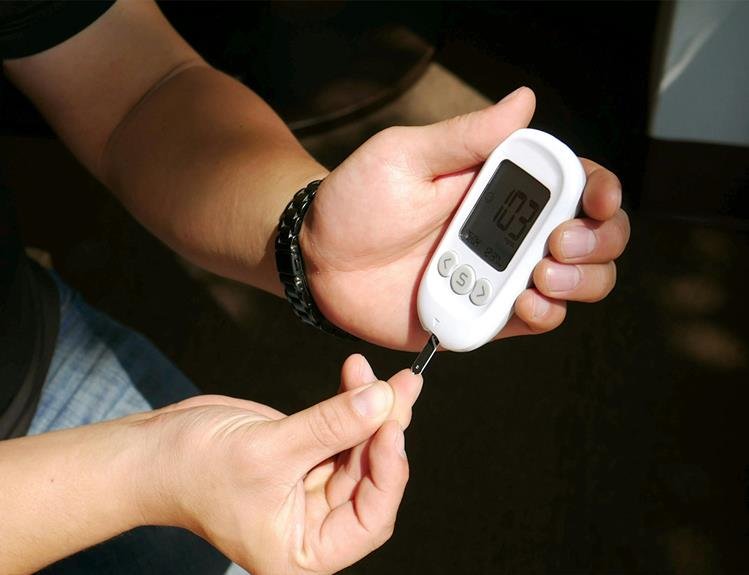Breaking Down Prediabetes: Myths Vs. Facts
Peeling back the layers of prediabetes, you may be surprised by the prevalent myths versus the lesser-known facts surrounding this condition. Unraveling the truths and misconceptions can pave the way for a clearer understanding of what prediabetes truly entails.
By shedding light on these misconceptions, you can equip yourself with the knowledge needed to make informed decisions about your health and well-being. Stay tuned to uncover the realities behind prediabetes and how it could impact your life.
Understanding Prediabetes
To understand prediabetes, consider evaluating your lifestyle choices and their impact on your health. Prediabetes is a condition where your blood sugar levels are higher than normal but not high enough to be classified as diabetes. It serves as a warning sign that changes need to be made to prevent the progression to type 2 diabetes. Assess your diet, exercise routine, and stress levels.
Are you consuming too many sugary foods and drinks? Are you leading a sedentary lifestyle? These factors can significantly increase your risk of developing prediabetes.
Make an effort to incorporate more whole foods, fruits, vegetables, and lean proteins into your diet. Engage in regular physical activity to help manage your weight and improve insulin sensitivity. Stress management techniques such as meditation or yoga can also be beneficial in controlling blood sugar levels.
Common Myths Debunked
You might've heard various myths about prediabetes, but it's time to set the record straight.
Let's separate fact from fiction, clear up any misconceptions, and uncover the truth behind prediabetes.
Myth Vs. Fact Comparison
Dispelling common misconceptions about prediabetes is essential in understanding the condition and taking proactive steps towards better health. Let's break down some myths versus facts to clear up any confusion.
Myth: Prediabetes isn't a serious condition.
Fact: Prediabetes is a critical warning sign that your blood sugar levels are high and could progress to type 2 diabetes if left unmanaged.
Myth: Only overweight individuals get prediabetes.
Fact: While excess weight is a risk factor, prediabetes can affect anyone, regardless of their body size.
Myth: Prediabetes can't be reversed.
Fact: With lifestyle changes like healthy eating and regular exercise, prediabetes can often be reversed, lowering the risk of developing type 2 diabetes.
Stay informed and take control of your health!
Misconceptions Clarified
Let's debunk common myths about prediabetes to provide clarity and promote better understanding of this condition.
One common misconception is that prediabetes isn't serious, but the truth is, if left unmanaged, it can lead to type 2 diabetes.
Another myth is that only overweight individuals develop prediabetes. However, anyone, regardless of weight, can be at risk.
Some people believe that prediabetes doesn't require treatment, but lifestyle changes like diet and exercise can help prevent or delay the progression to type 2 diabetes.
It's also not true that prediabetes always progresses to diabetes; with early intervention, it can be reversed. Understanding the facts about prediabetes is crucial for taking control of your health.
Truth Behind Prediabetes
Debunking common myths about prediabetes sheds light on the reality of this condition and empowers individuals to take proactive steps towards better health.
One prevalent myth is that prediabetes isn't a serious health concern. In truth, prediabetes is a warning sign that your blood sugar levels are elevated, increasing the risk of developing type 2 diabetes and other health complications.
Another misconception is that prediabetes can't be reversed. The reality is that with lifestyle changes such as regular exercise, healthy eating habits, and weight management, prediabetes can often be reversed or its progression prevented.
Understanding the truth behind prediabetes is crucial in motivating individuals to make positive changes and prioritize their well-being.
Risk Factors Clarified
To better understand your risk factors for prediabetes, it's essential to recognize the key lifestyle and genetic elements that play a significant role in its development. Lifestyle factors such as poor diet, lack of physical activity, excess body weight, and smoking can increase your risk of developing prediabetes. Consuming high amounts of sugary and processed foods, combined with a sedentary lifestyle, can contribute to insulin resistance, a precursor to prediabetes. Additionally, genetic factors can also play a role in predisposing individuals to prediabetes. If you have a family history of type 2 diabetes or gestational diabetes, you may be at a higher risk of developing prediabetes.
Other risk factors to consider include age and ethnicity. As you age, your risk of prediabetes increases, especially after 45 years old. Certain ethnic groups, such as African Americans, Hispanic/Latino Americans, Native Americans, Asian Americans, and Pacific Islanders, are also at a higher risk of developing prediabetes. Understanding these risk factors can help you make informed decisions to prevent or manage prediabetes.
Diagnostic Criteria Explained
Understanding the diagnostic criteria for prediabetes is crucial for early detection and intervention. To diagnose prediabetes, healthcare providers primarily use blood tests such as the fasting plasma glucose (FPG) test, oral glucose tolerance test (OGTT), and the A1C test.
The FPG test measures your blood sugar after an overnight fast, with levels between 100-125 mg/dL indicating prediabetes. The OGTT involves fasting overnight and then drinking a sugary solution with blood sugar levels of 140-199 mg/dL indicating prediabetes. The A1C test reflects your average blood sugar levels over the past 2-3 months, with levels between 5.7-6.4% suggesting prediabetes.
It's important to note that a single abnormal test result doesn't confirm prediabetes; instead, healthcare providers often repeat the test to ensure accurate results. Early detection through these tests allows for timely lifestyle modifications to prevent the progression to type 2 diabetes.
Regular screenings are recommended, especially if you have risk factors like obesity, a sedentary lifestyle, or a family history of diabetes.
Lifestyle Modifications Importance
For individuals with prediabetes, making lifestyle modifications is crucial in preventing the progression to type 2 diabetes. By implementing changes in your daily habits, you can significantly improve your overall health and reduce the risk of developing diabetes. One of the most important lifestyle modifications you can make is adopting a healthy diet. Focus on consuming a variety of nutrient-dense foods such as fruits, vegetables, whole grains, lean proteins, and healthy fats. Limit your intake of sugary beverages, processed foods, and high-fat snacks to help control your blood sugar levels.
In addition to improving your diet, regular physical activity is essential in managing prediabetes. Aim for at least 150 minutes of moderate-intensity exercise per week, such as brisk walking, swimming, or cycling. Exercise not only helps lower blood sugar levels but also improves insulin sensitivity and promotes weight loss. Remember, even small changes in your lifestyle, like taking the stairs instead of the elevator or going for a short walk after meals, can make a significant difference in managing prediabetes and preventing its progression to type 2 diabetes.
Medical Interventions Overview
Considering your prediabetes condition, medical interventions play a significant role in managing and potentially reversing the progression to type 2 diabetes. If you have been diagnosed with prediabetes, your healthcare provider may recommend medications to help control blood sugar levels. Common medications include metformin, which can improve insulin sensitivity and reduce glucose production in the liver. Additionally, your doctor may suggest other medications based on your individual health needs.
In some cases, healthcare providers may also recommend insulin therapy to help regulate blood sugar levels effectively. Insulin therapy may be necessary if other medications and lifestyle changes don't adequately control blood sugar levels. Your doctor will work with you to find the most suitable treatment plan for your prediabetes.
Regular check-ups and monitoring of your blood sugar levels are essential when utilizing medical interventions for prediabetes management. It's crucial to follow your healthcare provider's recommendations diligently to ensure optimal control of your condition and reduce the risk of developing type 2 diabetes.
Prevention Strategies Highlighted
To effectively combat prediabetes and reduce the risk of developing type 2 diabetes, implementing proactive lifestyle changes is key. One of the most crucial prevention strategies is maintaining a healthy weight. By achieving and sustaining a healthy weight through a balanced diet and regular physical activity, you can significantly lower your risk of developing type 2 diabetes. Incorporating whole foods such as fruits, vegetables, lean proteins, and whole grains into your diet while limiting processed foods and sugary beverages can make a substantial difference.
Another essential prevention strategy is staying physically active. Engaging in regular exercise not only helps with weight management but also improves insulin sensitivity, reducing the likelihood of developing type 2 diabetes. Aim for at least 150 minutes of moderate-intensity exercise per week, such as brisk walking, cycling, or swimming.
Additionally, managing stress levels and getting an adequate amount of quality sleep each night are vital components of a comprehensive prevention plan. By prioritizing these lifestyle changes, you can effectively lower your risk of progressing from prediabetes to type 2 diabetes.
Frequently Asked Questions
Can Prediabetes Be Reversed Completely Through Lifestyle Changes Alone?
You can reverse prediabetes completely through lifestyle changes alone. By adopting healthy habits like eating well and exercising regularly, you can lower your blood sugar levels and reduce your risk of developing diabetes.
Are There Any Specific Foods That Can Help Prevent or Manage Prediabetes?
When managing prediabetes, focus on whole foods like leafy greens, berries, and nuts. These choices can help stabilize blood sugar levels and support overall health. Remember, "An apple a day keeps the doctor away" might just ring true for you!
Is There a Genetic Component to Prediabetes That Increases a Person's Risk?
Yes, there is a genetic component to prediabetes that can increase your risk. Factors like family history and ethnicity play a role. Understanding your genetic predisposition can help tailor your prevention strategies and screenings.
How Often Should Someone With Prediabetes Have Their Blood Sugar Levels Monitored?
You should monitor your blood sugar levels regularly if you have prediabetes. Check in with your healthcare provider to determine the best frequency for you. Monitoring can help you stay on top of your health.
Are There Any Alternative Treatments or Therapies That Have Been Shown to Be Effective in Managing Prediabetes?
You can explore alternative treatments like lifestyle changes, dietary modifications, regular exercise, and weight management to effectively manage prediabetes. These approaches have shown positive outcomes in controlling blood sugar levels and reducing the risk of developing diabetes.
Conclusion
So there you have it, folks. Prediabetes is just a made-up term to scare you into eating kale and running marathons, right?
Wrong! Take a look at the facts and educate yourself before assuming it's all a myth. Remember, prevention is key, but if you'd rather roll the dice and risk full-blown diabetes, go ahead and keep living that sedentary lifestyle.
Good luck with that sugar rush!





